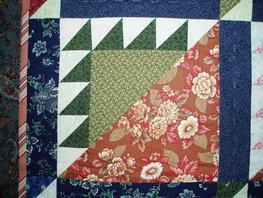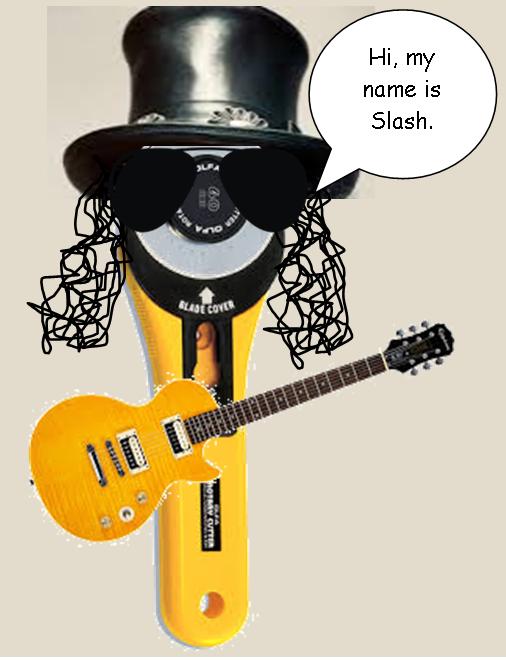Precision Piecing, Broken into Parts

- Cutting
- Aligning
- Stitching
- Pressing
(I tried to come up with another word for Cutting that starts with a "G" so that the 4 steps would spell G.A.S.P., but somehow "Gouging" didn't feel quite right. I'm open to suggestions.)
Component 1: Cutting
|
Luckily for us, we quilt in the age of the rotary cutter, gridded cutting mat, and transparent ruler. Volumes could be (and probably have been) written about tricky techniques for all the specialized rulers available. For this article, I'll just focus on the rotary cutter, and the one essential rule of rotary cutters: keep it sharp! |
And never, ever use it to trim window screen when you're repairing the screen door! No, not even the vinyl screen, and certainly NOT the aluminum stuff. Aluminum screening will make little notches in the blade that will leave "skips" of un-cut threads in your fabric. Don't ask me how I know that.
When your rotary blade starts leaving "skips," whether due to abuse or long use, it's time to replace it. Dispose of the old blade safely (I wrap mine in masking tape), or put it in a box clearly labeled, "old blades for cutting paper and window screen."
Whether you're cutting with scissors or a rotary blade, it's generally not a good idea to try to cut too many layers of fabric at once. Cutting too many layers will be likely to cause distortion from friction drag. For scissors, the cautious maximum is 2, or 4 for a rotary cutter.
Fabric grain is also an important consideration in cutting. All woven fabric has 3 distinct grains, or directions in the weave. The straight grain is along the length of the fabric, that is, parallel to the selvages. In this direction, fabric will have virtually no stretch. The cross grain runs from selvage to selvage. Fabric stretched across the grain will give a little, then return to its original shape. Bias refers generally to any diagonal cut, or more precisely to a 45-degree angle. Fabric has maximum stretch on the bias, but will not return to shape after stretching.
The different stretch characteristics of the 3 fabric grains come into play in a big way in aligning, the second component of precision quilt piecing. For cutting, what's important to note is that your strips and patches should be cut square with the fabric grain.
In general, it's best to cut strips across the grain. That is, the long side of the strip should be on the cross grain. Of course, yardage limitations will sometimes dictate straight-grain strips. I'll discuss that further in the next article, Indispensable Tips for Precision Quilt Piecing, Part 2: Aligning.
Subscribe to my email list below to notified!



 RSS Feed
RSS Feed